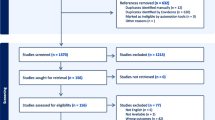Abstract
Catastrophic bleeding is a feared complication of robotic abdominal procedures that involve dissection in close proximity to major vessels. In the event of uncontrollable hemorrhage, standard practice involves emergency undocking with conversion to laparotomy. Resuscitative endovascular balloon occlusion of the aorta (REBOA) is a rapid and life-saving technique gaining acceptance in the trauma setting for the management of catastrophic hemorrhage. The purpose of this study was to evaluate feasibility of REBOA for emergency hemostasis during robotic surgery. The surgical robot was docked to a REBOA mannequin to simulate an upper abdominal surgery. A femoral arterial line was placed in the mannequin. Supplies needed for REBOA insertion were opened and arranged on the surgical back table. The surgeon was seated at the console with an assistant scrubbed. A catastrophic vascular injury was announced. The time it took the surgeon to achieve aortic occlusion by the REBOA was recorded. Four surgeons participated and performed three timed trials each. Each surgeon, irrespective of experience with REBOA or years in surgical practice, was able to obtain aortic occlusion in less than 2 min. The mean time to aortic occlusion for all surgeons was 111 s. No manipulation of the robotic arms was required to perform the procedure. Aortic occlusion was achieved rapidly with REBOA. Ability to achieve prompt aortic control was not associated with surgical experience or prior familiarity with the REBOA device. Prophylactic femoral access and preparation of supplies facilitates prompt placement of the occlusion balloon. REBOA should be considered as a viable alternative to open laparotomy for temporary hemorrhage control during robotic surgery.



Similar content being viewed by others
References
Lee YF, Albright J, Akram WM, Wu J, Ferraro J, Cleary RK (2018) Unplanned robotic-assisted conversion-to-open colorectal surgery is associated with adverse outcomes. J Gastrointest Surg 22(6):1059–1067
O’Sullivan OE, O’Sullivan S, Hewitt M, O’Reilly BA (2016) Da Vinci robot emergency undocking protocol. J Robot Surg 10(3):251–253
Moore LJ, Brenner M, Kozar RA, Pasley J, Wade CE, Baraniuk MS et al (2015) Implementation of resuscitative endovascular balloon occlusion of the aorta as an alternative to resuscitative thoracotomy for noncompressible truncal hemorrhage. J Trauma Acute Care Surg 79(4):523–530 (discussion 30–32)
DuBose JJ, Scalea TM, Brenner M, Skiada D, Inaba K, Cannon J et al (2016) The AAST prospective Aortic Occlusion for Resuscitation in Trauma and Acute Care Surgery (AORTA) registry: data on contemporary utilization and outcomes of aortic occlusion and resuscitative balloon occlusion of the aorta (REBOA). J Trauma Acute Care Surg 81(3):409–419
Romagnoli A, Teeter W, Pasley J, Hu P, Hoehn M, Stein D et al (2017) Time to aortic occlusion: it’s all about access. J Trauma Acute Care Surg 83(6):1161–1164
Darrabie MD, Croft CA, Brakenridge SC, Mohr AM, Rosenthal MA, Mercier NR et al (2018) Resuscitative endovascular balloon occlusion of the aorta: implementation and preliminary results at an academic level I trauma center. J Am Coll Surg 227(1):127–133
Brenner M, Hoehn M, Pasley J, Dubose J, Stein D, Scalea T (2014) Basic endovascular skills for trauma course: bridging the gap between endovascular techniques and the acute care surgeon. The J Trauma Acute Care Surg 77(2):286–291
Cali G, Forlani F, Giambanco L, Amico ML, Vallone M, Puccio G et al (2014) Prophylactic use of intravascular balloon catheters in women with placenta accreta, increta and percreta. Eur J Obstet Gynecol Reprod Biol 179:36–41
Martinelli T, Thony F, Declety P, Sengel C, Broux C, Tonetti J et al (2010) Intra-aortic balloon occlusion to salvage patients with life-threatening hemorrhagic shocks from pelvic fractures. J Trauma 68(4):942–948
Author information
Authors and Affiliations
Contributions
All authors have made contributions to the conception, design, and analysis of the study. All authors have to some degree helped draft or revise the article as well as approve the submitted version.
Corresponding author
Ethics declarations
Conflict of interest
James N. Bogert is on the speakers’ bureau for Prytime Medical: maker of a REBOA catheter. Prytime medical donated use of their REBOA simulator for this study. Author England, author Spear, author Huang, author Weinberg, author Gillespie, and author Mankin declare they have no conflict of interest.
Additional information
Publisher's Note
Springer Nature remains neutral with regard to jurisdictional claims in published maps and institutional affiliations.
Rights and permissions
About this article
Cite this article
England, E.C., Spear, C.R., Huang, DD. et al. REBOA as a rescue strategy for catastrophic vascular injury during robotic surgery. J Robotic Surg 14, 473–477 (2020). https://doi.org/10.1007/s11701-019-01011-3
Received:
Accepted:
Published:
Issue Date:
DOI: https://doi.org/10.1007/s11701-019-01011-3




